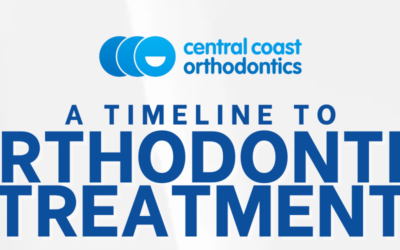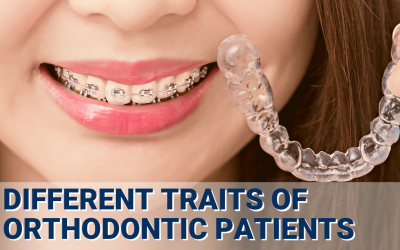Interesting Facts about Orthodontic Braces

Whether you call the process “braces,” “orthodontics,” or simply straightening your teeth, these 7 facts about orthodontics – the very first recognized specialty within the dental profession – may surprise you.
1. The word “orthodontics” is of Greek origin.
“Ortho” means straight or correct. “Dont” (not to be confused with “don’t”) means tooth. Put it all together and “orthodontics” means straight teeth.
2. People have had crooked teeth for eons.
Crooked teeth have been around since the time of Neanderthal man. Archeologists have found Egyptian mummies with crude metal bands wrapped around teeth. Hippocrates wrote about “irregularities” of the teeth around 400 BCE* – he meant misaligned teeth and jaws.
About 2,100 years later, a French dentist named Pierre Fauchard wrote about an orthodontic appliance in his 1728 landmark book on dentistry, The Surgeon Dentist: A Treatise on the Teeth. He described the bandeau, a piece of horseshoe-shaped precious metal that was literally tied to teeth to align them.*
3. Orthodontics became the first dental specialty in 1900.
Edward H. Angle founded the specialty. He was the first orthodontist: the first member of the dental profession to limit his practice to orthodontics only – moving teeth and aligning jaws. Angle established what is now the American Association of Orthodontists, which admits only orthodontists as members.
4. Gold was the metal of choice for braces circa 1900.
Gold is malleable, so it was easy to shape it into an orthodontic appliance. Because gold is malleable, it stretches easily. Consequently, patients had to see their orthodontist frequently for adjustments that kept treatment on track.
5. Teeth move in response to pressure over time.
Some pressure is beneficial, however, some is harmful. Actions like thumb-sucking or swallowing in an abnormal way generate damaging pressure. Teeth can be pushed out of place; bone can be distorted.
Orthodontists use appliances like braces or aligners to apply a constant, gentle pressure on teeth to guide them into their ideal positions.
6. Teeth can move because bone breaks down and rebuilds.
Cells called “osteoclasts” break down bone. “Osteoblast” cells rebuild bone. The process is called “bone remodelling.” A balanced diet helps support bone remodelling. Feed your bones!
7. Orthodontic treatment is a professional service.
It’s not a commodity or a product. The type of “appliance” used to move teeth is nothing more than a tool in the hands of the expert. Each tool has its uses, but not every tool is right for every job. A saw and a paring knife both cut, but you wouldn’t use a saw to slice an apple. (We hope not, anyway!)
A Partnership for Success
Orthodontic treatment is a partnership between the patient and the orthodontist. While the orthodontist provides the expertise, treatment plan and appliances to straighten teeth and align jaws, it’s the patient who’s the key to success.
The patient commits to following the orthodontist’s instructions on brushing and flossing, watching what they eat and drink, and wearing rubber bands (if prescribed). Most importantly, the patient commits to keeping scheduled appointments with the orthodontist. Teeth and jaws can move in the right directions and on schedule when the patient takes an active part in their treatment.
AAO orthodontists are ready to partner with you to align your teeth and jaws for a healthy and beautiful smile.
When you choose an AAO orthodontist for orthodontic treatment, you can be assured that you have selected a highly skilled specialist. Orthodontists are experts in orthodontics and dentofacial orthopedics – properly aligning teeth and jaws – and possess the skills and experience to give you your best smile.
To read the original article, click here.
DISCLAIMER:
The content has been made available for informational and educational purposes only. Central Coast Orthodontics does not make any representation or warranties with respect to the accuracy, applicability, fitness, or completeness of the content.
The content is not intended to be a substitute for professional personal diagnosis or treatment. Always seek the advice of your dentist or another qualified health provider with any questions you may have regarding a dental or medical condition. Never disregard professional advice or delay seeking it because of something you have read or seen on the Site.
Learn More About
Related Articles
A Timeline To Orthodontic Treatment
Embark on your smile journey with Central Coast Orthodontics! Orthodontic timeline takes you through each step of your transformation…
Invisalign or Braces: Which Orthodontic Treatment is Right For You?
Unsure which is the best orthodontic treatment for you? This infographic may help you compare the differences between Invisalign and Braces..
New Year Goals for a Healthier Smile
As we enter the year 2023, let’s start better habits for maintaining an optimum oral health. Read today’s infographic to know more about it..
Different Traits of an Orthodontic Patient
Do you know that even if you go for an orthodontic treatment, there’s no guarantee that your treatment would be successful? This is because there are different traits an orthodontic patient has, so which one are you?







